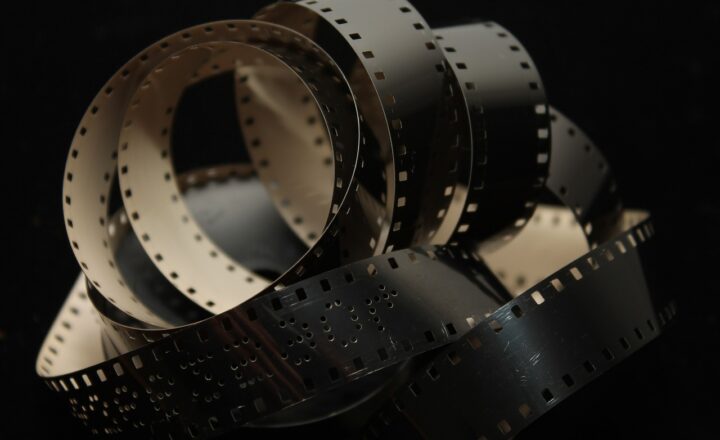
The film industry has undergone tremendous changes over the years, particularly in the realm of special effects. From the rudimentary techniques of early cinema to the breathtakingly realistic visuals we witness today, the evolution of visual effects has dramatically influenced how stories are told on the big screen. This article delves into the impact of realistic visual effects on modern filmmaking, exploring their history, advancements, and the transformative storytelling possibilities they present.
1. The Birth of Visual Effects: A Historical Perspective
Visual effects (VFX) can be traced back to the early 1900s when pioneers like Georges Méliès experimented with techniques like stop motion, double exposure, and forced perspective. One of the most famous examples is Méliès’ 1902 film *A Trip to the Moon*, which included innovative visual tricks that captivated audiences.
Over the decades, as technology progressed, filmmakers began to adopt more complex techniques such as miniatures, matte paintings, and animatronics. Each of these played a critical role in creating immersive worlds, but they still had limitations in terms of realism.
2. The Advent of CGI: A Game Changer
The most significant turning point for visual effects came with the advent of computer-generated imagery (CGI) in the 1970s and 80s. Films like *Star Wars* (1977) and *Tron* (1982) showcased CGI’s potential, paving the way for a new era in filmmaking. CGI allowed for the creation of entire worlds, characters, and effects that would have been impossible with traditional techniques.
As CGI technology developed and became more accessible, filmmakers were able to produce even more convincing and complex visuals. The groundbreaking visual effects in films like *Jurassic Park* (1993) demonstrated the immense capabilities of CGI, bringing dinosaurs to life in such a convincing manner that audiences were left in awe.
3. Blending Practical Effects with CGI
While CGI has transformed the landscape of visual effects, the most successful films often employ a blend of practical effects and CGI. Directors like Christopher Nolan and Guillermo del Toro have been vocal about their preference for practical effects when possible, utilizing real sets, animatronics, and makeup to enhance authenticity.
The combination of these techniques results in a more tactile and believable experience for the audience. For instance, the visual effects in *Mad Max: Fury Road* (2015) relied heavily on practical stunts and explosions, enhancing the impact of the CGI enhancements that followed.
4. Advances in Technology: Realism at Our Fingertips
In recent years, advancements in technology have continued to enhance the realism of visual effects. Techniques like motion capture, photorealistic rendering, and augmented reality have changed the game once again. Motion capture, for example, allows actors to portray animated characters, resulting in performances that range from the jaw-dropping *Avatar* (2009) to the animated *The Lion King* (2019).
Furthermore, developments in virtual production, like those used in *The Mandalorian*, leverage real-time rendering technologies that blend live-action performances with CGI backgrounds in an immersive, interactive environment. This allows for a remarkable degree of control over lighting, camera angles, and perspectives, leading to stunning visual narratives.
5. The Impact on Storytelling & Audience Engagement
The evolution of visual effects has fundamentally transformed how stories are told in film. Audiences today expect a certain level of realism that enhances their emotional connection to the narrative. Engaging visuals can help evoke feelings of wonder, suspense, or empathy, which can elevate the overall experience of a film.
However, with great power comes great responsibility. Filmmakers must be cautious not to rely solely on visual effects to carry their stories; instead, VFX should complement strong storytelling and character development. Too often, audiences have witnessed films that prioritize effects over narrative coherence, leading to the infamous phrase, “style over substance.”
6. The Future of Visual Effects
The future of visual effects appears limitless, moving toward hyper-realistic representations and engaging interactivity. Virtual reality (VR) and augmented reality (AR) technologies are on the brink of changing how we watch and experience films, creating dynamic environments where the viewer can immerse themselves in the story.
As artificial intelligence becomes more integrated into production workflows, it could lead to even more seamless visual effects that blend reality with digital artistry. From facial recognition to script-to-screen automation, AI may enhance the storytelling process significantly.
Conclusion: A Perfect Union of Art and Technology
Visual effects have undoubtedly shaped the landscape of modern cinema, providing creators with the tools to bring their wildest imaginations to life. As the technology continues to evolve, filmmakers have the power to weave together the perfect blend of art and technology, unlocking new realms of storytelling. The balance between visual effects and narrative depth will define the future of cinema, making this an exciting time to be a part of the film industry.
Ultimately, as audiences continue to crave immersive experiences, the role of realistic visual effects in shaping today’s films will remain both crucial and transformative for years to come.








